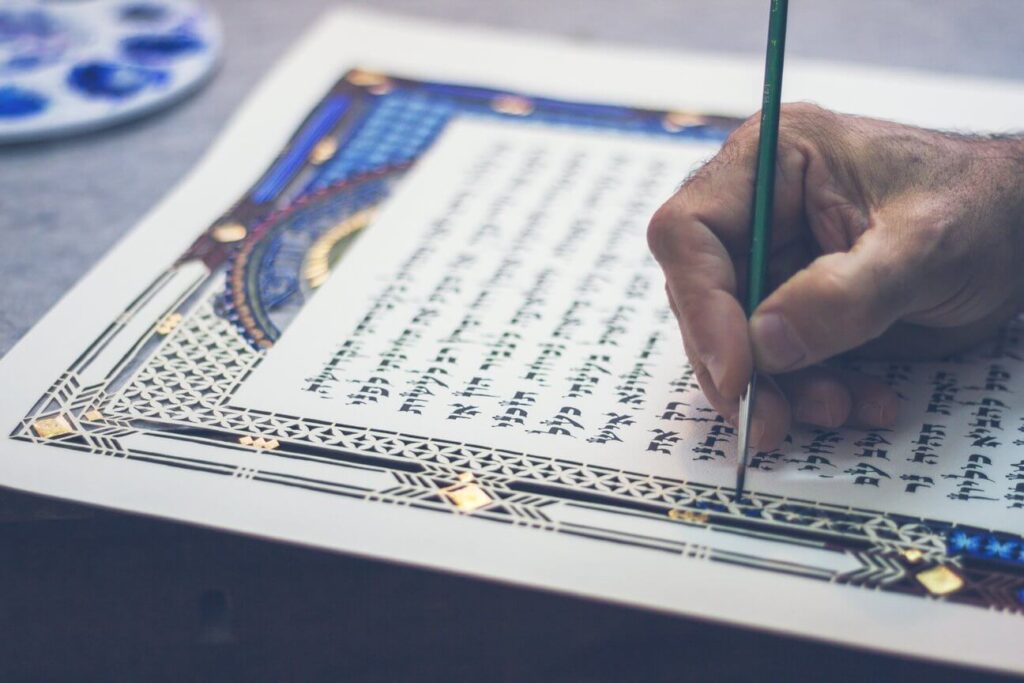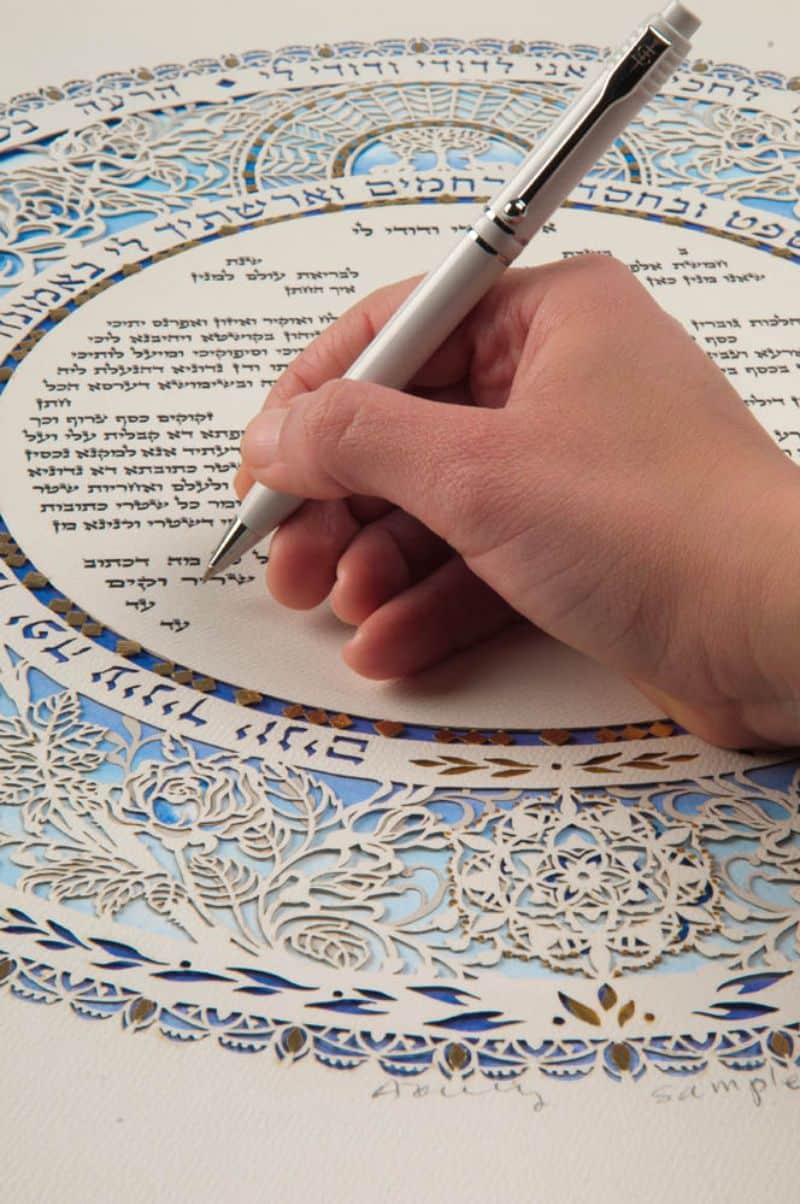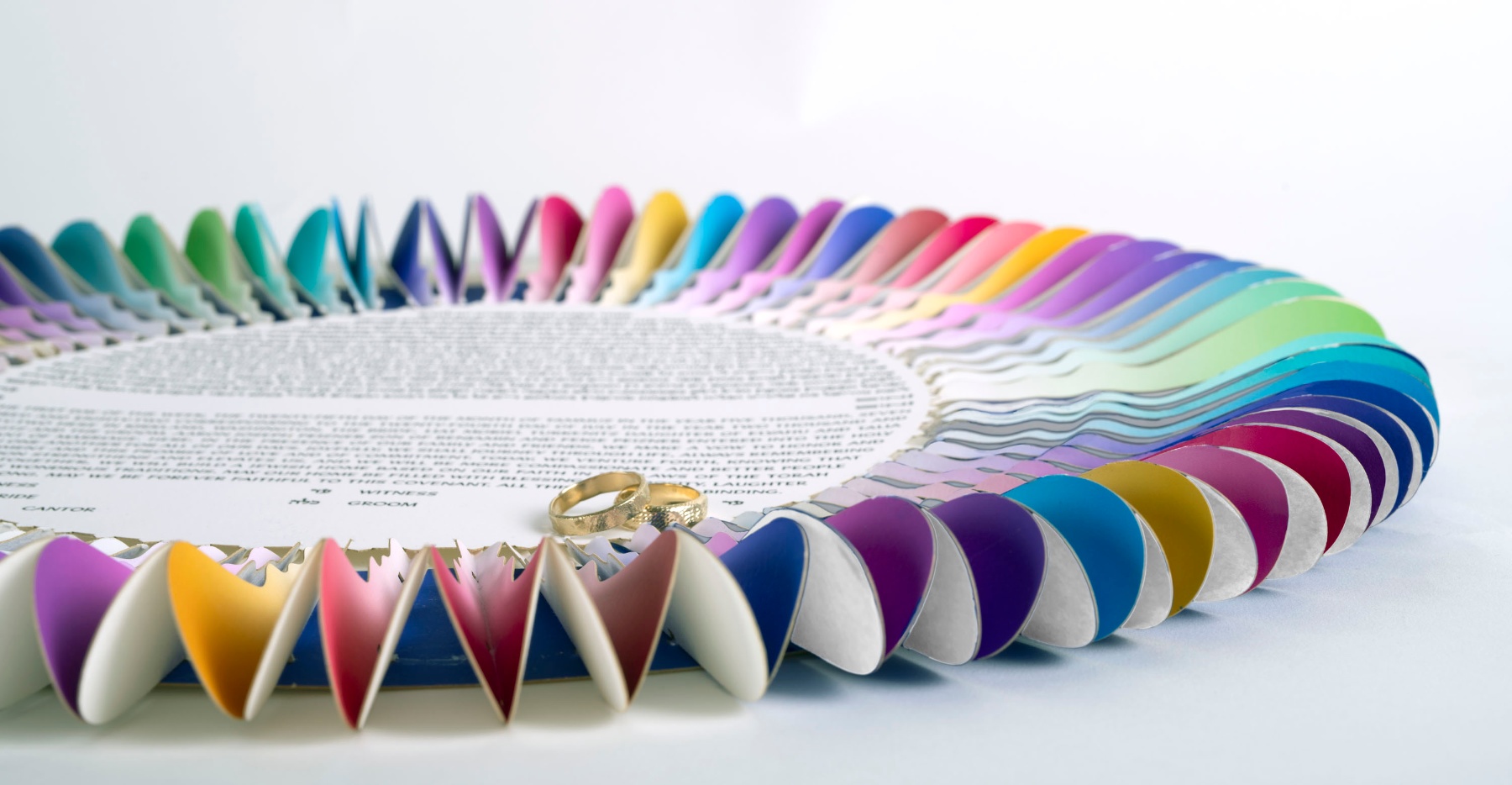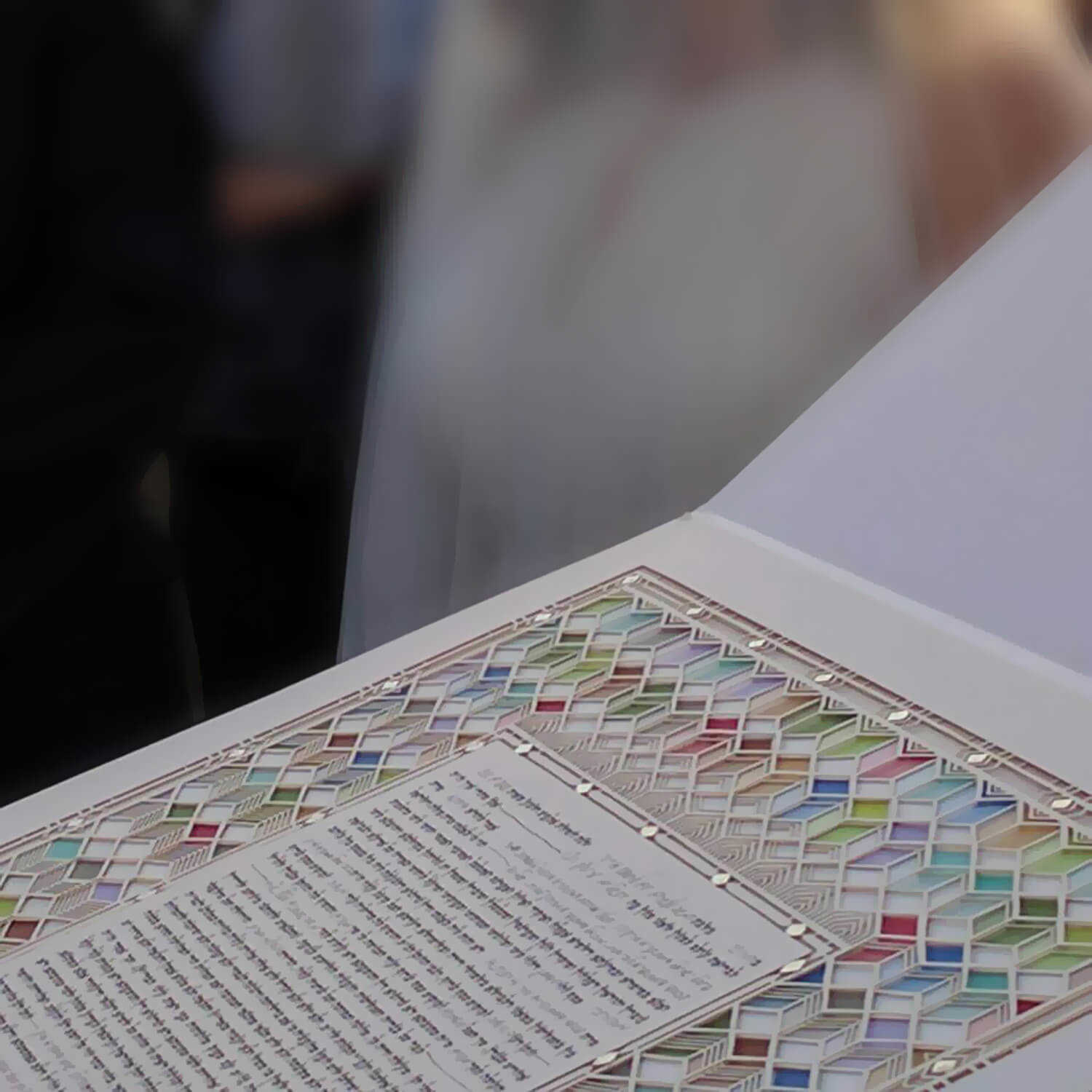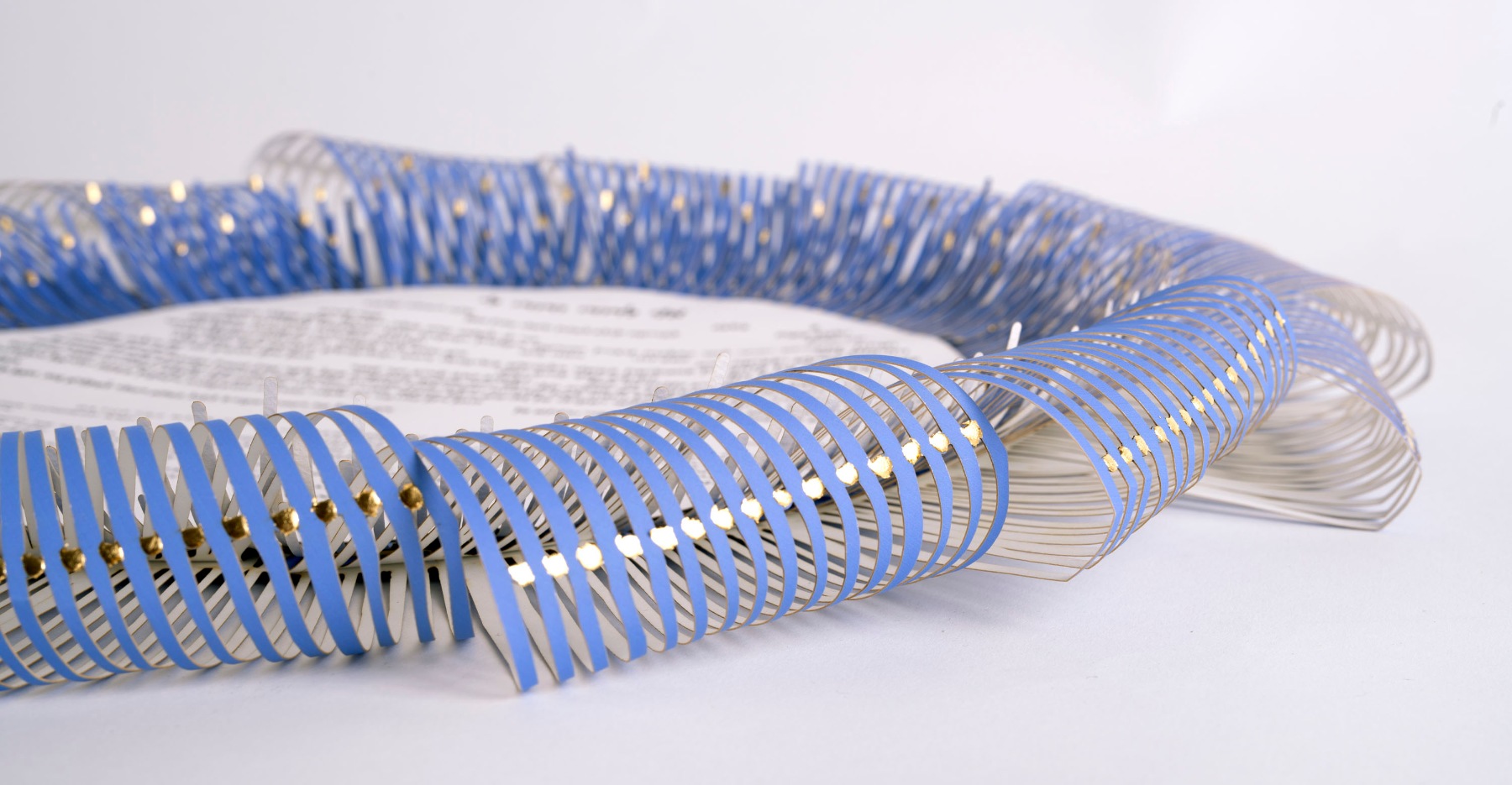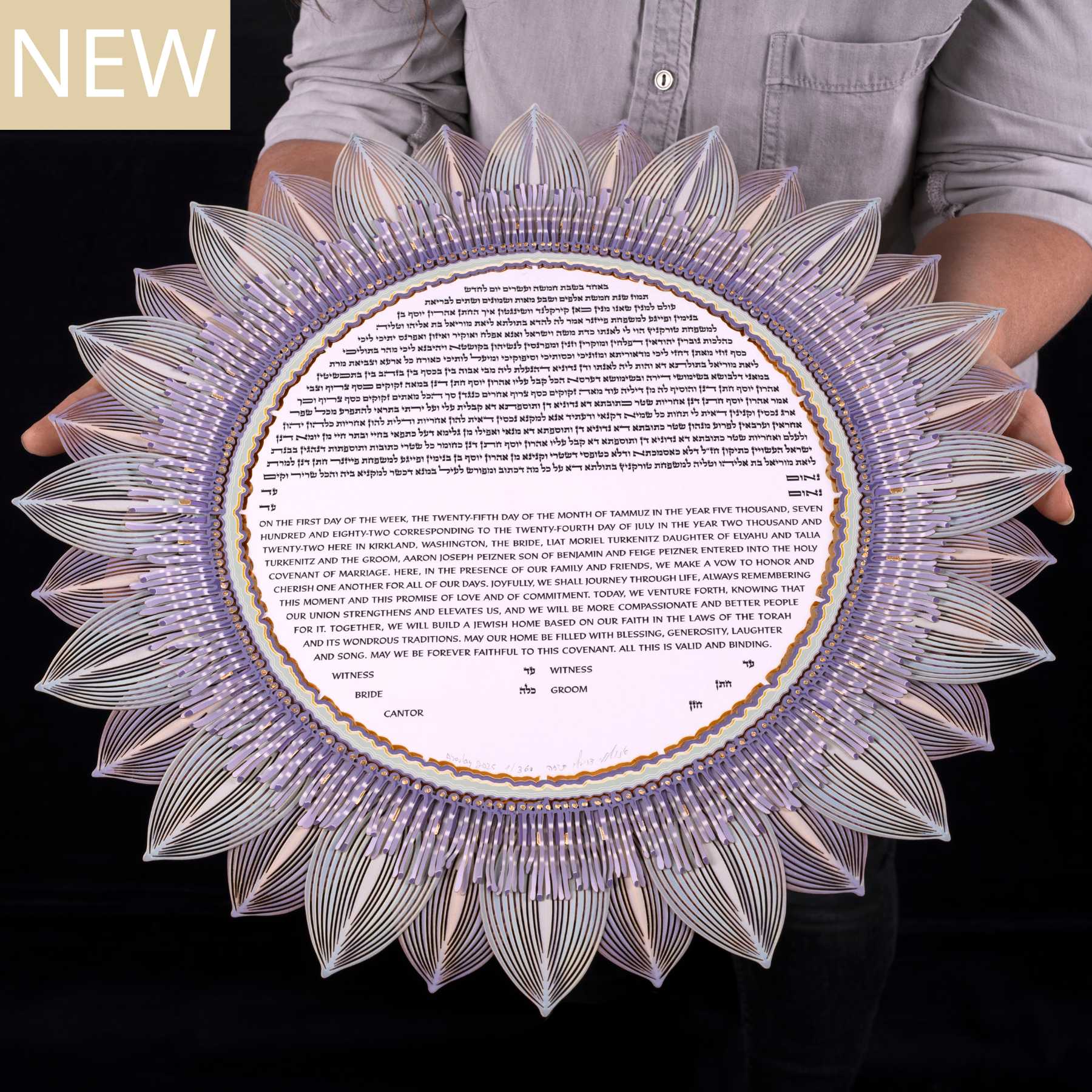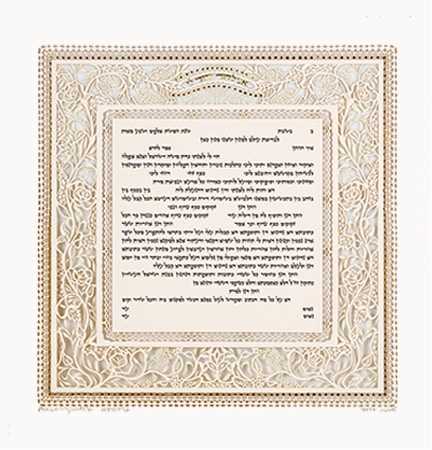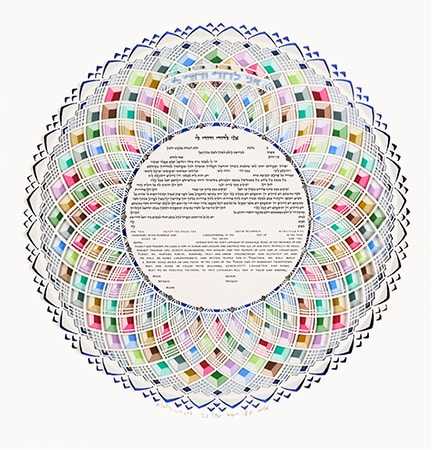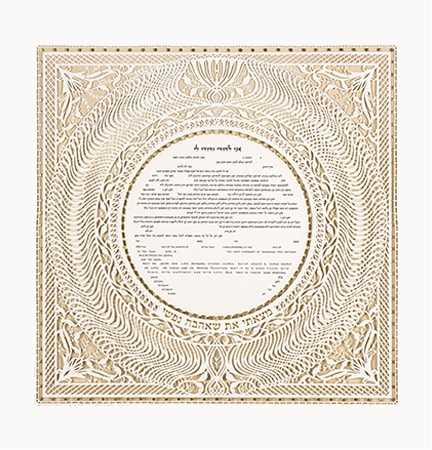How Interfaith Couples Can Incorporate a Ketubah in Their Wedding

In today’s diverse world, more couples are entering into loving, committed partnerships that span religious or cultural backgrounds. For interfaith couples, planning a wedding that honors both identities can be a beautiful yet complex journey. One powerful and increasingly popular way to do this is through the creation of an interfaith ketubah — a modern interpretation of the traditional Jewish marriage contract. Historically, a ketubah outlined the obligations of the husband to his wife under Jewish law, but in contemporary ceremonies — especially interfaith weddings — the ketubah has evolved into a symbolic, artistic statement of mutual love, respect, and partnership.
An interfaith ketubah respects the roots of Jewish tradition while creating space for inclusive, personalized language that reflects the couple’s shared values and different religious backgrounds. an interfaith ketubah is an expression of the couple’s vision for their married life together. Texts may include blessings of harmony, mutual support, shared and individual growth, or spiritual unity without referencing specific religious obligations. Some couples choose egalitarian or humanist texts, while others work with their officiants/rabbis to craft entirely original wording that reflects the unique character of their individual religious traditions and their interfaith union.
As the demand for customized ketubahs continues to grow, artists have responded with a wide range of designs and text options suitable for interfaith couples. These covenants of marriage not only serve a ceremonial purpose but become cherished heirlooms. Whether traditional, modern, or something entirely in-between, the interfaith ketubah is a testament to the blending of histories, beliefs, love and a mutual respect for each of the partners in marriage .It is testimony to an affirmation that an interreligious ketubah can honor the place from which each partner comes from, while celebrating the shared journey ahead.
Design Options and Inclusivity in Text
For couples entering an interfaith marriage, crafting a ketubah that genuinely reflects their values often begins with the language. Traditional Jewish couples’ ketubot are written in Aramaic and focus primarily on the husband’s obligations; but this format doesn’t always suit the needs of modern couples. That’s why an inclusive ketubah text has become a popular choice among those who seek to preserve elements of their Jewish heritage while honoring a shared spiritual path. Whether you’re blending religious backgrounds or simply want a more egalitarian tone, today’s ketubahs can be written in spiritual, humanist, pluralistic, or completely custom formats — often in both Hebrew and English translation (or any other language).
Leading ketubah artists are well-versed in adapting traditional formats into inclusive, modern designs that speak to each couple’s personal story. From secular affirmations of love and mutual respect to Reform ketubah texts that honor the Jewish tradition through a contemporary lens and egalitarian language, couples are no longer bound by rigid frameworks. The artistry extends beyond text — many artistic ketubah designs incorporate universal symbols like trees, circles, or light, and are presented as gorgeous pieces of art meant to be displayed in the home for decades to come.
In many cases, officiants play a vital role in guiding couples through the process of selecting or writing meaningful ketubah language. They may suggest text options that incorporate elements from each partner’s background, help strike a tone that feels respectful to both families, or offer language that emphasizes the core values of the couple’s relationship. And for those drawn to this beautiful tradition with a bit of a twist, a papercut ketubah with modern text is a stunning fusion of the old and the new.
With the right collaboration between artist, couple, and officiant, the ketubah becomes far more than a formality — it becomes a declaration of unity, individuality, and enduring love.
Framing and Displaying an Interfaith Ketubah
Once the wedding is over, the ketubah doesn’t get tucked away like most documents—it becomes a lasting visual celebration of the couple’s bond. For interreligious couples, putting the ketubah on display is often a deeply intentional act. It’s more than décor—it’s a statement of unity, inclusion, and the values that ground their shared life. Whether inspired by modern minimalism, lush botanical illustrations, abstract symbolism, or a Dreams Ketubah filled with starlit motifs, the artwork and Ketubah Text can transform into a powerful focal point in the home.
Framing plays a critical role in preserving both the sentiment and craftsmanship of the piece. For traditional ketubahs written on parchment or adorned with gold leaf, UV-protective glass and acid-free matting are essential. Likewise, for delicate papercut ketubot or textured mixed-media Ketubah Art, float framing or double-glass frames help preserve the integrity while showcasing its intricate layers. These are particularly popular options among couples looking to elevate the piece from paper to heirloom.
Styling your ketubah’s placement also matters. Many couples choose to hang it near their dining area, bedroom, or entryway, so it greets them each day as a grounding reminder of their official marriage certificate—but infused with love, art, and identity. For interfaith households, keeping the aesthetic neutral or culturally blended is key: a wood frame with a soft linen mat, or perhaps a brushed metal edge that bridges tradition with modern flair.
Ultimately, a custom text option ensures that it is not only visually stunning, but also a personal ketubah—filled with words and symbolism that reflect shared Jewish values and inclusive love. Framing the ketubah isn’t just about preserving it. It’s about letting it live on with you, every single day.
Why Choose a Custom Interfaith Ketubah?
For many couples navigating a shared path across cultures or faiths, the wedding ceremony is both a celebration and a moment of intentional unity. Choosing a custom interfaith ketubah allows that moment to be honored with a document that’s not only legally symbolic, but also emotionally resonant. Custom design offers full flexibility in both visuals and in its interfaith ketubah text, giving couples the freedom to express their love, beliefs, and family values in a way that feels authentic and inclusive. Whether it’s integrating a Hebrew translation alongside English, or incorporating family traditions from both sides, the result is more than a legal document—it’s a piece of art that tells your story. This is, of course, an option for those who have the budget and the timeframe to create a designed personal ketubah. There are plenty of ketubah websites and ketubah studios that sell beautiful artful ketubahs with the option to customize the language only, which is either at no extra charge or at an affordable fee.
Many ketubah artists today specialize in working with interfaith couples, bringing a deep understanding of the sensitivity and nuance such unions require. An accomplished ketubah artist will guide couples through the process of designing a document that reflects both heritage and individuality, offering elements like blended cultural symbols, adaptable language, and hand-written ketubahs that bring warmth and soul to the page. For those who opt for an interreligious ketubah, this bespoke approach ensures no one feels left out—every word and brushstroke can be tailored to match the values of both partners.
Couples often describe the experience of receiving their custom ketubah as one of the most personal times of joy during wedding planning. Testimonials speak of feeling seen, understood, and empowered—particularly when this meaningful tradition becomes the visual centerpiece of their home or the emotional highlight of their ceremony. In a world where love takes many forms, a ketubah stands as a proud, permanent reminder that your union deserves to be celebrated exactly as it is: honest, beautiful, and completely yours.

